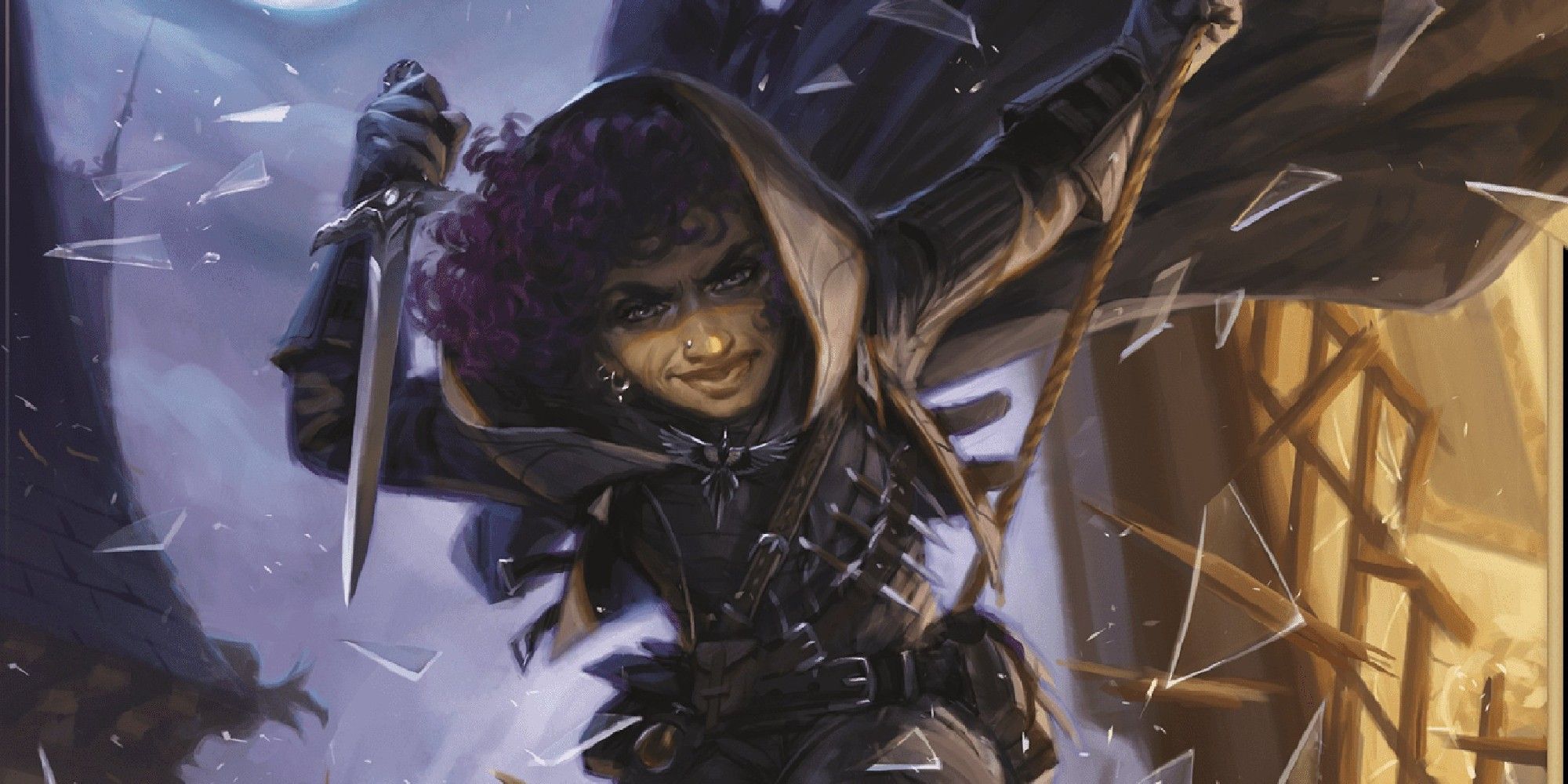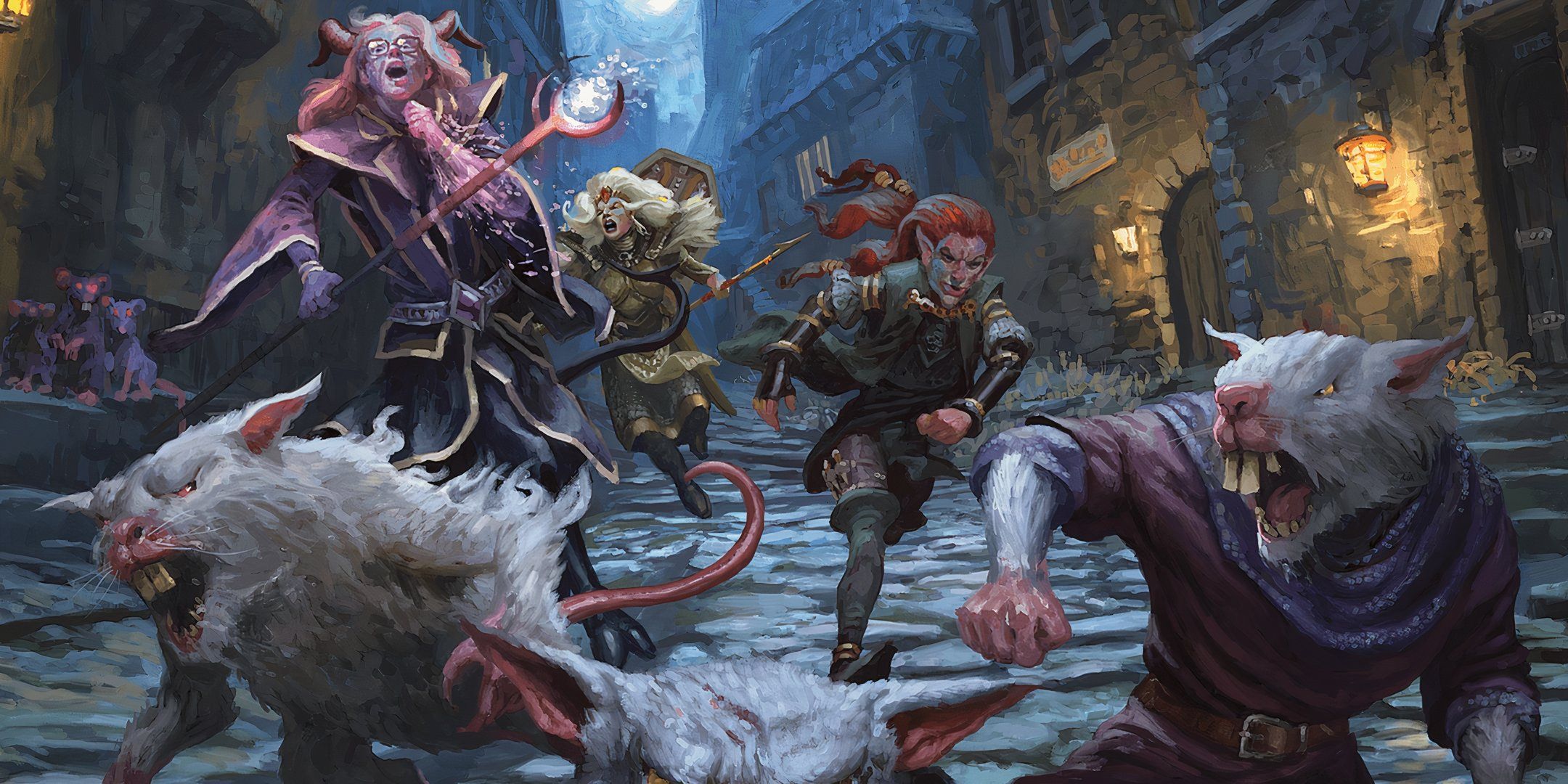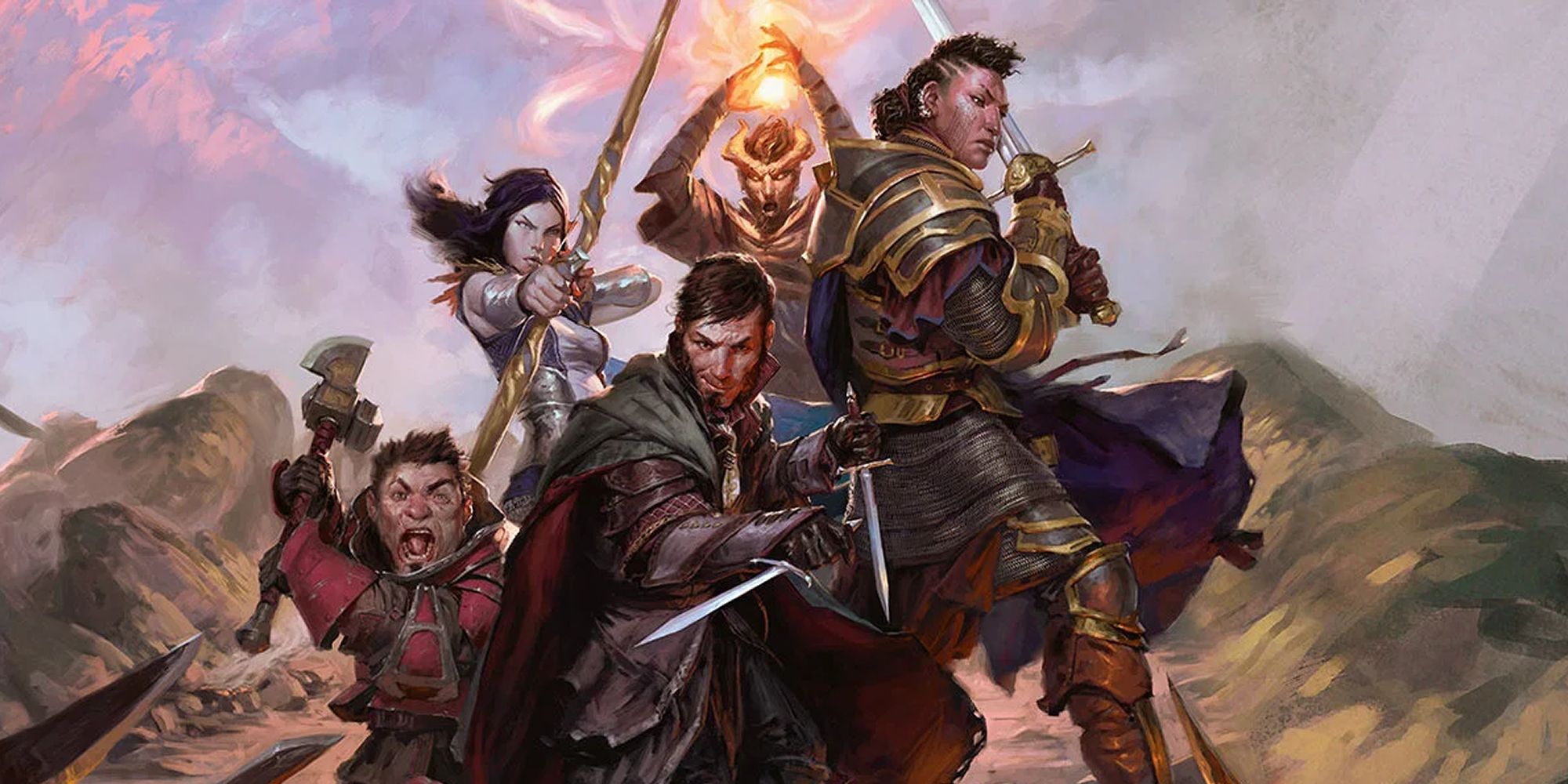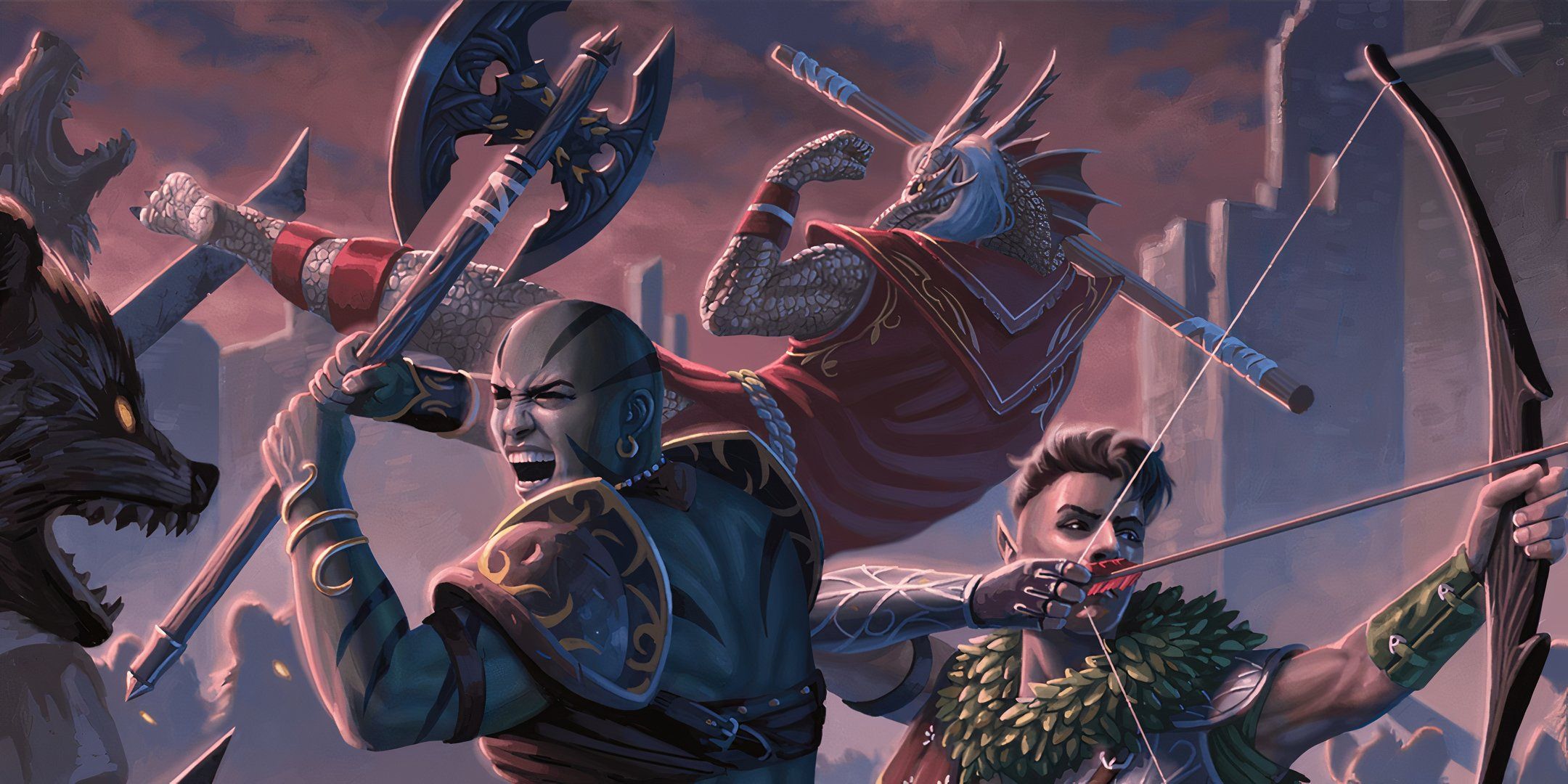Dungeons & Dragons has a reputation for being one of the most complex games in existence. Although it’s meant to take place in a fantasy world with fantastical creatures, players are still subject to the iron fist of physics. This means there are limitations to what you can and can’t do.

Related
Dungeons & Dragons: How To Calculate Fall Damage
Falling from a high place in DND can be the death of your precious player character or a useful environmental hazard to employ. Here’s how it works.
One of these limitations involves dual-wielding. It’s not always possible to swing two weapons around at once. However, there are class and race abilities that can help out in this regard. Some feats are open to almost all sorts of builds. And, one of them grants your character the skill needed to dual-wield weapons.
Updated January 18, 2025 by Jack Filsinger: Dual-wielding in DND Fifth Edition has changed decently since the release of the 2024 Player’s Handbook. We’ve updated this list with new rules for dual-wielders and added tips on how to gain access to dual-wielding in DND.
What Is Dual-Wielding?
Dual-wielding is a method of fighting in Dungeons & Dragons that allows players to fight and deal damage with two separate weapons. They can hold each weapon in one hand during combat.
In order to officially dual-wield within the mechanics of the game, there are a few different options. The standard method is to use Light weapons.
This is available to absolutely every type of character.
The only restriction is that the weapons you use to dual-wield must have the Light property ascribed to them. If each weapon has the Light property, then the process looks like this.
- First Attack – You must first take the Attack action on your turn and attack with a Light weapon.
- Dual Wield Second Attack – From there, you can make one extra attack as a Bonus Action on the same turn, so long as the extra attack weapon also has the Light property.
It should be mentioned that when you make your second attack with a Light weapon, you do not add your Strength or Dexterity modifier to the damage roll unless the modifier is negative.
Additionally, your off-hand weapon isn’t influenced by any abilities or feats that would give your character an additional attack.
For example, a level five Fighter wielding a short sword (main) and a dagger (off-hand) can attack twice with the sword, but would still need to use their Bonus Action to attack with the dagger.
It can be an appealing tactic if your character decides to equip two lightweight throwing weapons as it will let you throw an additional projectile.
The problem is that no matter how you spin it, dual-wielding in this way requires you to sacrifice your Bonus Action just to make it viable. This means you’ll be sacrificing a whole list of other Bonus Actions, reducing your versatility.
How To Use The Dual-Wielder Feat
The more advanced method of dual-wielding is to take the Dual Wielder feat. This excellent feat is a super solid pick.
When a character gains this, they get the ability known as Enhanced Dual Wielding. They gain the following bonuses when fighting with two weapons.
- Ability Score Increase – Players can increase their Strength or Dexterity score by one, to a maximum of 20.
- Enhanced Dual Wielding – When you attack with a Light weapon, you can make an additional attack as a Bonus Action with any weapon as long as it’s a melee weapon that lacks the Two-Handed property. You still don’t add your ability modifier to the damage.
- Quick Draw – You may draw and stow two different weapons as long as they lack the Two-Handed property.
The Dual Wielder Feat has two prerequisites. First, you must be level four or above. Second, you must have a Strength or Dexterity score of 13+.

Related
Dungeons & Dragons: Which Equipment Pack Should You Choose?
With so many choices, we’ll help you determine which equipment pack is best for you.
How To Use Two-Weapon Fighting To Dual-Wield
The third method by which players can get access to dual wielding is through their class features. Some classes get access to Fighting Styles at certain levels.
|
Player Class |
Fighting Style Gained |
|---|---|
|
Fighter |
Level One |
|
Ranger |
Level Two |
|
Paladin |
Level Two |
For each of these classes, you can select a Fighting Style at the corresponding level. When you do so, choose the Two-Weapon Fighting style.
In doing so, you’ll be able to add your ability modifier to the damage of the second attack you make with your off-hand weapon.
In Tasha’s Cauldron of Everything, there is a feat known as Fighting Initiate. If you select this feat, you may choose a Fighting Style option from the fighter class. This means you can pick the Two-Weapon Fighting style even if you’re not a fighter, ranger, or paladin.
However, you must have proficiency with martial weapons to do so.
How To Maximize Dual-Wielding
Through any of the above methods, you can dual-wield as soon as you get your hands on two weapons. But, you may be wondering what the best way to dual-wield is once you can.
How Does Dual-Wielding Effect Damage?
First, it’s worth noting that Light weapons do deal less damage than other types of weapons. When you dual-wield, you’re trading in one-time damage for better action economy, or more specifically, for more attacks.
Whether it may be obvious, Dual-Wielder is tailor-made for melee builds that constantly find themselves in the middle of the fray.
It’s all about hitting as many times as possible since you’ll frequently be sacrificing your Bonus Action to output more damage.
What Are The Best Classes For Dual-Wielding?
Despite what it offers, Dual-Wielding is not for everyone and is better suited to certain classes than others. Here are some classes worth exploring as a Dual-Wielder.
The Fighter
One class you should consider is the fighter, simply due to the fact that they get Extra Attacks as they level up.
The more they get, the higher their damage, and adding Dual-Wielding to this will increase your damage exponentially.
The Barbarian
The second class you should look at is the barbarian. While this may seem an odd choice since the Bonus Action is usually reserved for entering Rage, remember that once entered, it lasts for one minute (ten rounds of combat).
That means that the barbarian can charge in swinging with their main weapon and top things off by adding their additional weapon that can benefit from the Rage bonus damage.
The Rogue
Another class to consider when picking Dual-Wielder is the rogue class. Though naturally seen as stealthy and dexterous, the rogue is able to gain huge bonuses to attack damage by sneak and ambush tactics.
Giving them dual-wield mastery allows them to spread out their powerful strikes over multiple hits for additional damage.

Next
Dungeons & Dragons: How To Brew Your Own Potions
Why bother with healing spells when you can bring your own potions?




















Leave a Reply